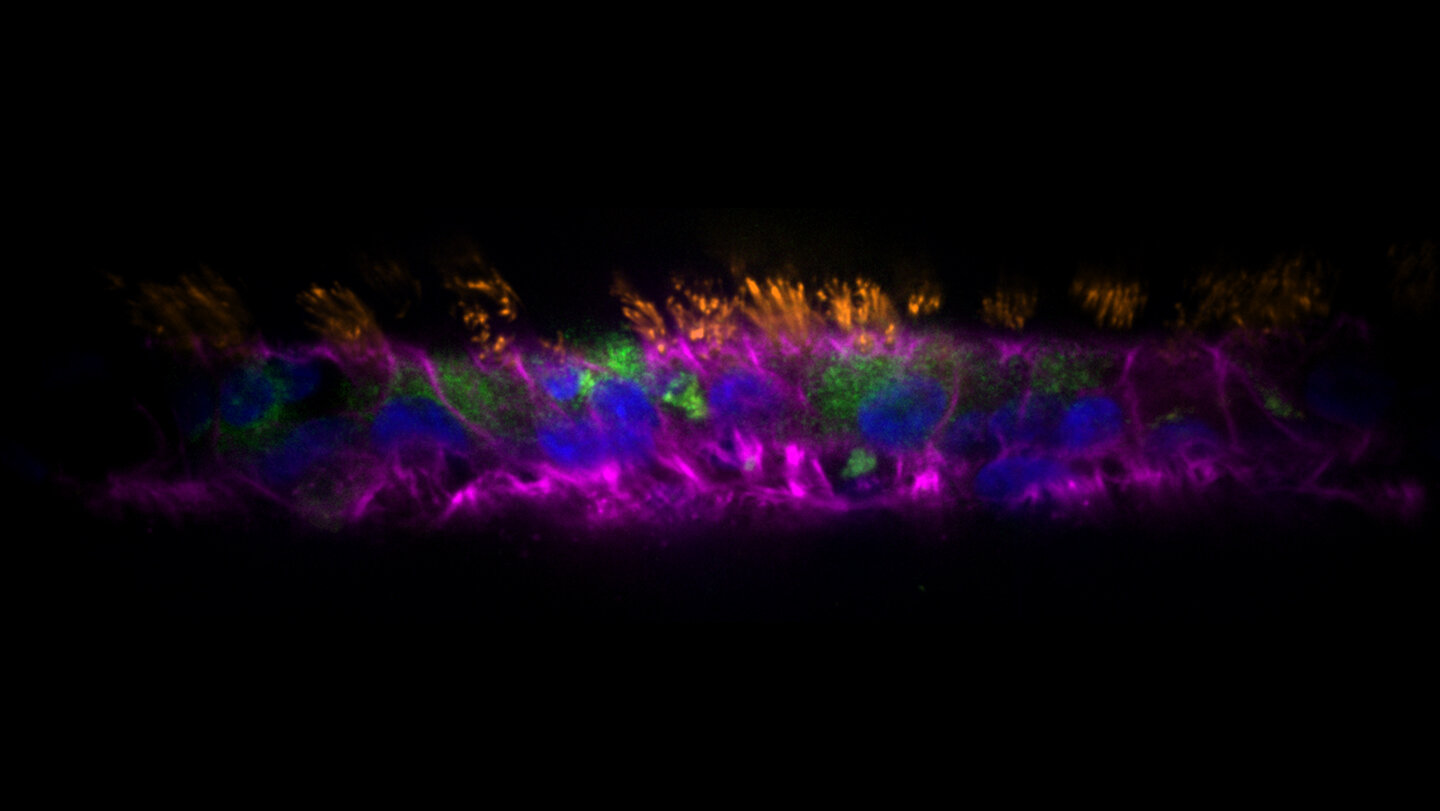Biofilms, which are communities of bacteria with high resistance to treatment, present a significant challenge in fighting infections. While extensive research has been conducted on biofilm formation in laboratory conditions, understanding their development in the complex human respiratory tract environment has remained difficult.
A team of researchers, led by Alexandre Persat at EPFL, has made a breakthrough by successfully developing organoids known as AirGels. Organoids are miniaturized 3D tissues grown from stem cells to mimic actual organs and tissues in the human body. They represent a milestone in the field, allowing scientists to replicate and study the intricate environments of organs in a laboratory setting.
The AirGels, developed by Tamara Rossy and her colleagues, are bioengineered models of human lung tissue that offer new possibilities in infection research. They revolutionize infection research by accurately reproducing the physiological properties of the airway mucosa, including mucus secretion and ciliary beating. This technology enables scientists to study airway infections in a more realistic and comprehensive manner, bridging the gap between laboratory studies and clinical observations.
“There is significant potential in the engineering of organoids for infection research. It is a game changer,” says Persat.
In a study published in PLoS Biology, the researchers used AirGels to investigate the role of mucus in the biofilm formation process of Pseudomonas aeruginosa, a pathogenic bacterium known for its resistance to antibiotics. By infecting the AirGels with P. aeruginosa and observing them under high-resolution live microscopy, they were able to observe the biofilm formation in real time.
Their observations revealed that P. aeruginosa actively induces contraction of the host’s mucus using retractile filaments called type IV pili (T4P). These filaments generate the necessary forces to contract the airway’s mucus, allowing the P. aeruginosa cells to aggregate and form a biofilm. The researchers validated their findings through follow-up simulations and biophysical experiments on selected P. aeruginosa mutants.
The study demonstrates that the AirGel organoid model can provide unique insights into the mechanical interactions between bacteria and their host environments. In this case, it unveiled a previously unknown mechanism contributing to biofilm formation in the respiratory tract.
The ability to engineer organoids that faithfully replicate the mucosal environment opens up new avenues for exploration. Researchers can uncover overlooked aspects of infections, investigate the influence of additional physiological factors such as temperature, humidity, drugs, and chemical stressors on infection development and progression, and develop targeted treatments for antibiotic-resistant pathogens.
More information: PLoS Biology (2023). DOI: 10.1371/journal.pbio.3002209
Citation: Organoids revolutionize research on respiratory infections (2023, August 1) retrieved 2 August 2023 from https://phys.org/news/2023-08-organoids-revolutionize-respiratory-infections.html
This document is subject to copyright. Apart from any fair dealing for the purpose of private study or research, no part may be reproduced without the written permission. The content is provided for information purposes only.
Denial of responsibility! TechCodex is an automatic aggregator of the all world’s media. In each content, the hyperlink to the primary source is specified. All trademarks belong to their rightful owners, and all materials to their authors. For any complaint, please reach us at – [email protected]. We will take necessary action within 24 hours.

Jessica Irvine is a tech enthusiast specializing in gadgets. From smart home devices to cutting-edge electronics, Jessica explores the world of consumer tech, offering readers comprehensive reviews, hands-on experiences, and expert insights into the coolest and most innovative gadgets on the market.


